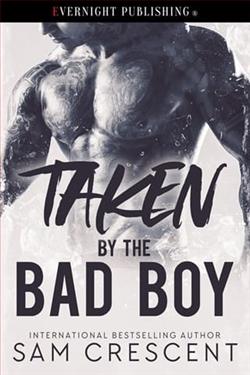Page 1 of All These Beautiful Strangers
Prologue
My father built the house on Langely Lake for my mother, in the town she grew up in. It was a hundred miles from the glassy skyscrapers my father built in the city, and a world away from the Calloway family name and money and penthouse on the Upper East Side.
The house on Langely Lake looked unlike any of the other houses in town, with their graying vinyl siding and slouching carports. No, the house on Langely Lake wasn’t a house at all. It was a fortress three stories tall, built of stone, with a thick fence and impenetrable hedges all the way around.
When I was a little girl, we spent our summers in that fortress. I remember slumber parties in a tent on the back lawn and afternoons spent sunning on the raft just offshore. I remember tall glasses of lemonade sweating on the patio and the sundresses my mother wore and her wide-brimmed hats.
Once I thought my father had built that house to keep everyone else out, but then my uncle Hank found the photographs. They were in a shoebox, hidden under a loose floorboard in my parents’ bedroom. They were taken that summer, 2007, a few weeks before my mother disappeared. I saw the photographs and I realized I had been wrong about everything.
Because my father hadn’t built the house on Langely Lake to keep everyone else out. He’d built it to keep us in.
Part One
One
Charlie Calloway
2017
It all started that morning with a note, printed on thick card stock, no bigger than a business card.
Good morning, good day, some say, “Salut.”
Herein lies a formal invitation, just for you.
Forgive the anonymity of the sender, but you know who we are.
And we’re big admirers of yours, from afar.
We’re the opposite of the Omega, the furthest from the end,
Follow this clue to find us; we’re eager to begin.
The note was balanced on top of Knollwood Augustus Prep’s “Welcome Back!” flyer, printed in the school’s royal blue and gold colors, which announced that Club Day would be held in Healy Quad on Friday afternoon and encouraged every student to attend. This was followed by a list of all of Knollwood Prep’s student clubs and organizations. At the bottom, in delicate gold lettering, was the school’s mission statement to “foster students whose exacting inquiry and independence of thought drive them to excellence both inside and outside of the classroom.”
I might have missed the card stock note altogether if it hadn’t fluttered to the ground as I removed the flyer from my mailbox in the entrance to Rosewood Hall, the girls’ dormitory for upperclassmen. My heart stopped when I saw the note, for the first part—the sender—wasn’t difficult to figure out. You know who we are . . . We’re the opposite of the Omega, the furthest from the end. It was the A’s—the only club not listed on Knollwood Prep’s flyer and, in my mind, the only club worth joining.
It was the second part of the note I puzzled over as I sat in Mr. Andrews’s Introduction to Photography class. Normally, I couldn’t have gotten away with zoning out in class like that. Every class at Knollwood Prep was supposed to follow the Harkness method, meaning we all sat around a table facing each other, and we were expected to participate in the discussion with minimal intervention from our instructor. Some instructors even kept a notebook with every student’s name, and they would put a little tally mark next to our names as we talked. If, at the end of class, your name didn’t have a satisfactory number of tally marks next to it, they would send you a little note saying something like, We missed your voice in class today. Or, When not everyone speaks up, we all lose. Or, my personal favorite, You miss one hundred percent of the discussions in which you don’t participate.
But Mr. Andrews was new, just out of college, and he was much more lax than the other teachers. His Introduction to Photography class had been the most sought-after arts elective this semester, not because of the subject matter, but because Mr. Andrews was, well, hot. He had that dark, rugged hipster thing going for him—flannel button-downs that he didn’t tuck in; beanies to hide dark, unwashed hair; liquid brown eyes rimmed with baby-doll lashes longer than my own. Also, he had a distinct edge over most Knollwood Prep boys—he could grow facial hair. He always had a perfect five o’clock shadow cloaking his well-defined cheekbones.
Today, Mr. Andrews hadn’t come in with thick packets of photography theory for us to parse; instead, he came in with a nice-looking camera with a very long lens, which he passed around to all of us.
“This is called a telephoto lens,” Mr. Andrews said. “It produces a unique optical effect, which can create the illusion that two subjects separated by a great distance are actually very close. It’s a powerful tool for capturing candid moments when you can’t get physically close to your subject.”
He clicked a button on his laptop and a photo of a lion lounging on an African savanna displayed on the projector screen in front of the class.
“One of the most obvious examples of this is in wildlife photography or sports photography,” Mr. Andrews went on. “The photographer would physically be in danger if he or she were close to, say, a lion, or a professional baseball player up to bat. However, another, less obvious use is street photography, where an artist needs distance not for safety but to preserve the candidness of the shot.”
He clicked another button on his laptop and this time a photograph of a young woman and her child on a busy New York street filled the screen.
As he spoke, I stared down at the camera in my lap and fiddled with the zoom. I puzzled over the second half of the A’s riddle.
I have a head but never weep.
I have a bed but never sleep.
I can run but never walk.















